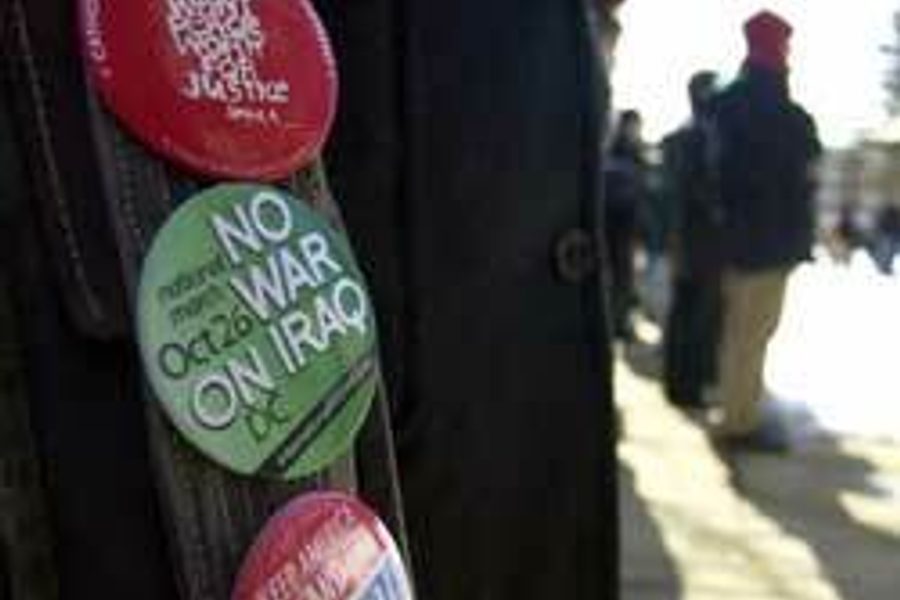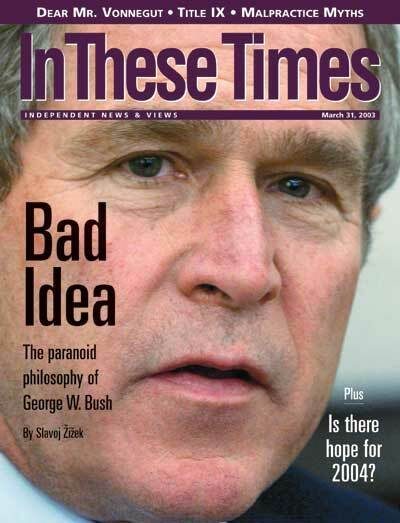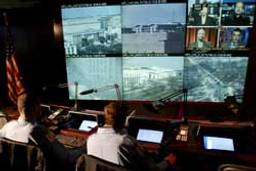
Chicago—Where are the students? It’s a question many seasoned anti-war activists have likely been asking in recent months, and a diverse new generation of campus organizers is beginning to answer. The National Youth and Student Peace Coalition (NYSPC) and the Campus Anti-War Network (CAN) are leading efforts to amass students from across the nation in actions planned for March and April.
From February 21 to 23, CAN brought more than 300 students from more than 100 universities and high schools together to discuss the future of the campus movement, which until recently has been fragmented and, some say, insignificant. While NYSPC has issued a call for a national day of student strikes on March 5 and created a coalition of several pre-existing national campus groups, CAN has focused its efforts on bolstering the broad, non-ideological base of the new movement.
Energized by the February 15 nationwide protests, the conference voted to pursue its own student-led national rally and march on April 5. It also urged students to participate in the March 5 national student walkout. “We want a real say in what we do, and we want to take back the grassroots anti-war movement,” Berkeley junior Michael Smith said, urging the conference to initiate its own actions and not simply join those of larger, more established groups.
Some delegates at the conference were skeptical of CAN’s ability to organize independently of mammoth anti-war organizations like International ANSWER and United For Peace and Justice (which organized the U.S. wing of the February 15 marches). But most, from schools large and small, seemed intent on jump-starting the campus movement independently of such large coalition groups.
Though national groups like the Campus Greens and Muslim Students Association have coordinated joint anti-war actions through individual chapters, CAN is the first to bring together student anti-war groups from around the nation. In making decisions entirely through consensus, the conference showed the ability of a diverse group of students—diverse not only in geography, but also race, class and ideology—to organize collectively and with decisiveness.
Debate hinted at a possible schism between activists seeking a broad, non-ideological basis for the campus movement and those involved in pre-existing organizations. But at the CAN conference, the former appeared to prevail. Delegates overwhelmingly saw a more democratic focus as an important divergence from the national anti-war movement, which some criticized as being dominated by top-down organizational methods and sectarian groups.
Though campuses have yet to rattle universities with their own large-scale war protests, more than 29 student governments have passed resolutions condemning military action in Iraq, and both New York University and the University of Texas organized walkouts in the thousands this winter. Still, such demonstrations are exceptions. The problem may be translating widespread verbal opposition to the war into prolonged student action against it.
NYSPC estimates that more than 200 campuses will be involved in the March 5 student walkouts, but some anti-war groups do not have the campus presence to take part effectively in such a radical demonstration. “We could have a walkout, and 20 people would walk out,” says Columbia University organizer Laura Durkay, who is organizing a March 5 panel discussion instead.
The struggle against war is in its infancy at many schools. At Southern Methodist University in Dallas, campus organizing began only recently and was initiated by faculty. “This is the buckle of the Bible Belt,” says SMU senior Christine Lee. “The faculty are the liberal ones, and the students are uninformed.”
At Rutgers University in New Jersey, anti-war organizers will enjoy the sanction of their university president in a March 6 walkout, when they’ll march on the state capitol protesting cuts in the school’s budget. Activists say the cuts are a “war tax”—a direct result of the tradeoff between military spending and federal aid to the states and education.
Budgets cuts and the economic impact of the war in Iraq may catalyze this student movement just as the draft prompted mass demonstrations in the ’60s. As the campus movement gains the confidence to chant its own demands—money for schools, not war—and not just those of the broader movement, its voice may grow more significant.
“We don’t have paid organizers. We don’t have huge banners. And it’s a lot harder for us to get permits,” Brown University student Shuan Joseph told fellow activists at the conference. “But if we could say to our campuses, ‘This is something we organized ourselves,’ we’d get a response. And this could be something qualitatively different.”
From February 21 to 23, CAN brought more than 300 students from more than 100 universities and high schools together to discuss the future of the campus movement, which until recently has been fragmented and, some say, insignificant. While NYSPC has issued a call for a national day of student strikes on March 5 and created a coalition of several pre-existing national campus groups, CAN has focused its efforts on bolstering the broad, non-ideological base of the new movement.
Energized by the February 15 nationwide protests, the conference voted to pursue its own student-led national rally and march on April 5. It also urged students to participate in the March 5 national student walkout. “We want a real say in what we do, and we want to take back the grassroots anti-war movement,” Berkeley junior Michael Smith said, urging the conference to initiate its own actions and not simply join those of larger, more established groups.
Some delegates at the conference were skeptical of CAN’s ability to organize independently of mammoth anti-war organizations like International ANSWER and United For Peace and Justice (which organized the U.S. wing of the February 15 marches). But most, from schools large and small, seemed intent on jump-starting the campus movement independently of such large coalition groups.
Though national groups like the Campus Greens and Muslim Students Association have coordinated joint anti-war actions through individual chapters, CAN is the first to bring together student anti-war groups from around the nation. In making decisions entirely through consensus, the conference showed the ability of a diverse group of students—diverse not only in geography, but also race, class and ideology—to organize collectively and with decisiveness.
Debate hinted at a possible schism between activists seeking a broad, non-ideological basis for the campus movement and those involved in pre-existing organizations. But at the CAN conference, the former appeared to prevail. Delegates overwhelmingly saw a more democratic focus as an important divergence from the national anti-war movement, which some criticized as being dominated by top-down organizational methods and sectarian groups.
Though campuses have yet to rattle universities with their own large-scale war protests, more than 29 student governments have passed resolutions condemning military action in Iraq, and both New York University and the University of Texas organized walkouts in the thousands this winter. Still, such demonstrations are exceptions. The problem may be translating widespread verbal opposition to the war into prolonged student action against it.
NYSPC estimates that more than 200 campuses will be involved in the March 5 student walkouts, but some anti-war groups do not have the campus presence to take part effectively in such a radical demonstration. “We could have a walkout, and 20 people would walk out,” says Columbia University organizer Laura Durkay, who is organizing a March 5 panel discussion instead.
The struggle against war is in its infancy at many schools. At Southern Methodist University in Dallas, campus organizing began only recently and was initiated by faculty. “This is the buckle of the Bible Belt,” says SMU senior Christine Lee. “The faculty are the liberal ones, and the students are uninformed.”
At Rutgers University in New Jersey, anti-war organizers will enjoy the sanction of their university president in a March 6 walkout, when they’ll march on the state capitol protesting cuts in the school’s budget. Activists say the cuts are a “war tax”—a direct result of the tradeoff between military spending and federal aid to the states and education.
Budgets cuts and the economic impact of the war in Iraq may catalyze this student movement just as the draft prompted mass demonstrations in the ’60s. As the campus movement gains the confidence to chant its own demands—money for schools, not war—and not just those of the broader movement, its voice may grow more significant.
“We don’t have paid organizers. We don’t have huge banners. And it’s a lot harder for us to get permits,” Brown University student Shuan Joseph told fellow activists at the conference. “But if we could say to our campuses, ‘This is something we organized ourselves,’ we’d get a response. And this could be something qualitatively different.”






